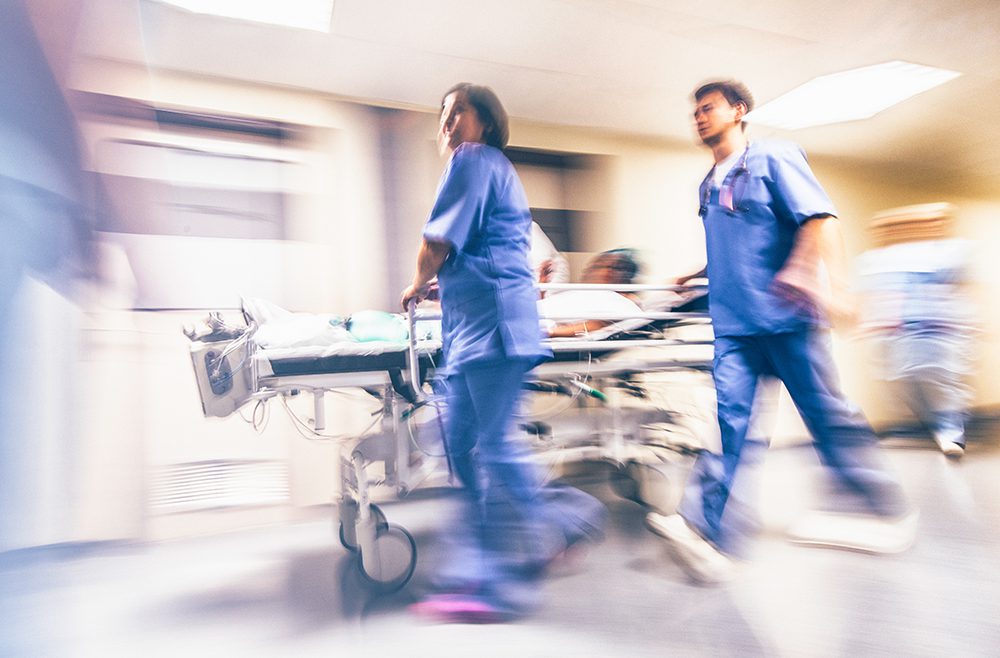The Supreme Court entrenched the right to bear arms as a decidedly individual right. And now, the ramifications will be felt in emergency departments and trauma centers across the country.
For many in healthcare, the first brush with a gun appears when victims of violence are rushed into emergency departments with a caravan of first aid responders and emergency medical technicians. We see the wounds, we see the violence, and we see the grotesque impact of bullet injuries on the human body.
We try to explain why this happens. Most healthcare workers are trained to thinking logically – every clinical symptom has a corresponding disease. This cause-and-effect logic leads many to believe that access to guns is the reason for the violent injuries they see – far more often than they would like.
So when the Supreme Court ruled against a century old New York law that required those carrying firearms to carry a permit and show cause, healthcare workers were left confused. They know what the consequences of this newfound liberty will be: More deaths and near fatal causalities.
Gun culture is uniquely American, and it has produced unique stresses on the American healthcare system.
A 2021 review of hospital costs from the Government Accountability Office (GAO) revealed about 33,000 inpatient stays and about 51,000 emergency room visits every year to treat gun related injuries.
Each of those acute visits was nearly three times the average patient cost, and collectively topped $2.5 billion in 2021 alone.
Most of the costs incurred for trauma related health services come from patients with Medicaid and other public health plans, who are also among those least able to pay out of pocket. So whatever the cost of care turns out to be is either public debt or a cost write-off for the hospital.
In short, the newfound liberties afforded to gun advocates present a distinct financial constraint on the healthcare system. Most hospitals that see patients of gun violence are already on the brink of bankruptcy, kept afloat through state-based Safety Net provisions.
They can hardly afford any additional financial pressure. But healthcare workers are bracing for the worse, knowing that once gun possession is firmly entrenched as an individual right, more people will be emboldened to carry it – and to use it more liberally in exercising their rights. This means guns will be more readily used in everyday discourse.
In response, health policy experts will initially advocate for gun control. They will present the statistics, show the pictures, and lobby in front of any politician who will lend an ear. But their efforts will be in vain, as it has always been.
Eventually, healthcare will develop a sense of learned indifference and will respond to gun violence through silent withdrawal. Trauma centers will close or severely limit the trauma services offered, leery of incurring ever growing losses – both ethically and financially – in caring for patients of gun violence. In short order, emergency departments will have permanent by-pass orders for ambulances carrying patients with gunshot wounds.
Soon, only a few hospitals will offer trauma services for patients of gun violence. These hospitals will be oases in the desert of patient care, lone bastions that continue to offer care for victims of gun violence, and continue to incur the moral injury that comes in caring for such patients.
With limited access to care, outcomes will worsen. Victims will struggle to find clinical care or travel longer distances for acute trauma care. Fewer resources and investments in clinical technology will be available. With longer distances and less support as a clinical field come more complications and worse outcomes. This is not unique to gun violence. It is an oft repeated paradigm of healthcare.
We seem to forget these clinical truths when discussing guns. But this is the reality of gun culture in America: The more liberties we offer gun owners, the worse the clinical outcomes for victims of gun violence.
https://www.pewresearch.org/fact-tank/2022/02/03/what-the-data-says-about-gun-deaths-in-the-u-s/















